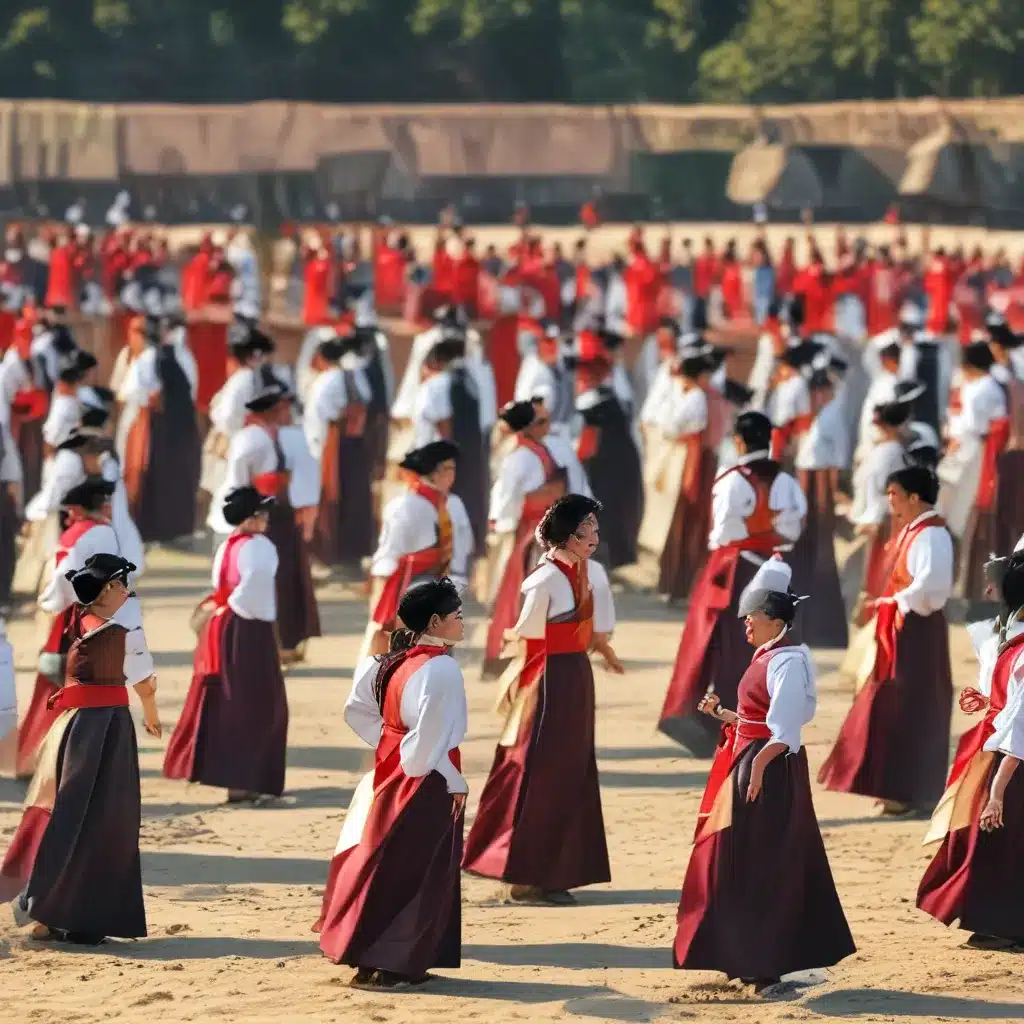
As I stepped into Jongmyo Shrine, the ancient heart of Korean culture, I felt a palpable sense of history surrounding me. The grand, austere buildings and meticulously manicured gardens seemed to whisper the stories of dynasties long past, beckoning me to uncover the secrets they held.
Uncovering the Rich Tapestry of Korean Heritage
I had come to Seoul, South Korea, with the intention of immersing myself in the country’s cultural traditions. And what better place to start than the Jongmyo Daeje Festival, a centuries-old celebration that pays homage to the royal ancestral spirits of the Joseon dynasty?
Jongmyodaeje, the biannual ritual held at Jongmyo Shrine, is considered one of the most important events in the Korean cultural calendar. As I wandered through the serene grounds, I could almost feel the weight of history pressing down on me, urging me to tread carefully and respectfully.
Stepping Back in Time: The Jongmyo Daeje Festival
The Jongmyo Daeje Festival is a captivating blend of reverence, tradition, and pageantry. Every year, on the first Sunday of May and the first Sunday of November, a grand procession of elaborately dressed performers, musicians, and royal guards makes its way through the streets of Seoul, ultimately converging at the Jongmyo Shrine.
As I joined the throng of spectators lining the streets, I was struck by the sheer scale and grandeur of the event. The procession seemed to stretch on endlessly, each participant meticulously costumed in the vibrant hues and intricate designs of traditional Korean garments.
Royal Procession, the centerpiece of the festival, is a magnificent display of pageantry that transports onlookers back in time. Rows of royal guards, their ceremonial uniforms gleaming, march in perfect synchronization, while musicians play hauntingly beautiful melodies on traditional instruments like the Korean Traditional Music Performances.
As the procession reached the Jongmyo Shrine, the atmosphere grew even more solemn and reverent. The Myohyeollye, a ritual offering to the ancestral spirits, was performed with utmost care and precision, each gesture and movement imbued with deep meaning and significance.
Immersing in the Sights, Sounds, and Flavors of Korean Culture
But the Jongmyo Daeje Festival was more than just a grand procession and solemn rituals. It was a true celebration of Korean culture, encompassing a diverse array of experiences that catered to all the senses.
One of the highlights for me was the Taste of Suragan Royal Kitchen, where I had the opportunity to sample the exquisite flavors of Joseon-era royal cuisine. As I savored the delicate flavors and intricate presentations of the dishes, I was transported back in time, imagining the lavish banquets and feasts that once graced the royal halls.
Equally captivating were the Palace Royal Guard Changing Ceremony and the Gyeongbokgung Starlight Tour, both of which offered a glimpse into the rich tapestry of Korean royal heritage.
Discovering the Depth of Korean Traditions
As I wandered through the various events and exhibitions, I couldn’t help but be struck by the depth and complexity of Korean culture. From the intricate Diplomatic Reception for Envoys to the Korean Empire to the lively Madang-nori Festival for College Students, each element of the Jongmyo Daeje Festival seemed to tell a story, weaving together the past and the present in a captivating and immersive experience.
I was particularly fascinated by the Royal Music Performance, where I was treated to a breathtaking display of traditional Korean music and dance. The haunting melodies and graceful movements transported me to a world of regal splendor, leaving me in awe of the artistry and skill of the performers.
Embracing the Future of Korean Culture
As I reluctantly bid farewell to the Jongmyo Daeje Festival, I couldn’t help but feel a deep appreciation for the rich cultural heritage of Korea. But this appreciation was not just for the past – it was for the future as well.
The GungON Project and the National Intangible Cultural Heritage Training Center exemplified the efforts of the Korea Cultural Heritage Foundation to not only preserve but also nurture the growth and evolution of Korean culture.
As I strolled back to my hotel, Hotel Stay Inn Seoul, I couldn’t help but feel a renewed sense of wonder and appreciation for the richness of Korean heritage. The Jongmyo Daeje Festival had left an indelible mark on me, and I knew that I would carry the memories and insights of this experience with me long after I had returned home.

